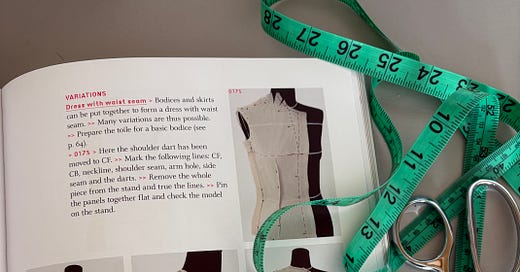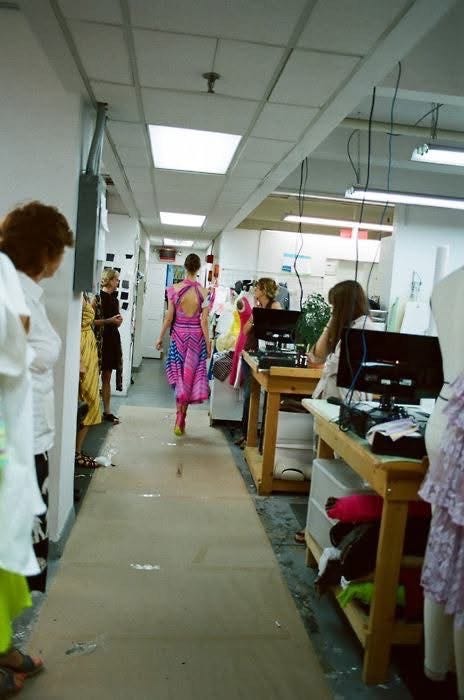Today we have a guest feature from one of our Fashivly stylists, Adria Kurland! Adria spent over a decade in New York City’s fashion scene, where she worked for iconic designers like Zac Posen, Elie Tahari, and Nanette Lepore. Her precision and artistry took her from design studios to photoshoots. After years of Brooklyn life, Adria returned to her native California, settling in the SF Bay Area with her husband and two daughters. Today, she channels her fashion expertise into helping others feel their best, with a special passion for guiding moms to rediscover their style post-kids—a journey she knows firsthand. She goes back to NYC every summer to visit friends and family and take in the amazing street style. We’re lucky enough to benefit from her expertise, and she’s been kind enough to share some of it with us on Dear Fashivly!
-
Adria: Finding clothing that fits properly is often a frustrating challenge. Many women lament the fact that there is no size standardization. Based on my years working as a fit expert in the fashion industry, I’m going to talk about why size standardization is not feasible, but I’ll leave you with some tips that can help.
Before shifting to styling, I worked as a Patternmaker in design studios in NYC. Patternmaking is the creation of paper templates that the fabric will be cut from before the pieces are sewn together. It is highly technical, and it’s based on dozens of body measurements.


Once the samples are sewn, we try them on fit models, who are people hired to give feedback on the fit of the garment. Different from runway models, who are sought out for their extreme proportions, fit models tend to be average height and very proportional because they are meant to be a representation of the company’s average customer. Fittings are a necessary step in clothing production, in order to see how the clothing will move, to ensure it’s comfortable for the wearer, and for the design department to see how their sketches will look on a real live person (you’d be surprised at how often a design needs to be altered because it doesn’t work on an actual body).
I’ve always worked at smaller design studios, where we had precisely one fit model. Larger companies like Old Navy run fit clinics where they test on multiple bodies of different proportions. But ultimately all of the information will be amalgamated into a single sample size.
Once the company has a sample size, they will do size grading, which uses an algorithm to create all the sizes above and below, altering each measurement in a systematic way while keeping the original sample’s proportions.
So given the fact that clothing design is based on dozens of body measurements, it’s unlikely that the fit model’s will be identical to yours. Even if you match the fit model’s bust, waist, and hip, there are many more body measurements that may not match yours, like torso length, inseam, sleeve length, etc.
That said, companies could agree that a size 8 pant, for example, means a 29” waist. Generally they do, however, some companies use “vanity sizing” meaning they’d call a 29” waist a size 6 (or even 4). This idea is based on the idea that customers are more likely to purchase an item if they think they’re a smaller size, but in my opinion it just makes things more difficult and confusing for customers.
There are additional factors like how stretchy a fabric is, or where a pant sits on your body (the rise), or how fitted or baggy a pant is meant to be from a design perspective, which complicates the idea of a standardized fit even further.
Here are some tips for getting your clothes to fit you properly.
1) When you purchase a garment, instead of taking the size at face value, look at the company’s size chart and make sure it matches your measurements as closely as possible. Use a tape measure to get your bust, waist, and hip measurements. For best accuracy, go to your local tailor and they’ll help you out. Although it’s a good idea to learn to take your own measurements because for most people, they will fluctuate.
2) Pay attention to size customization that commercial companies do offer. Short, Tall, Petite, Curvy, Plus, what does it all mean?
Many companies offer pant lengths in short, regular, and tall. In general, if you’re under 5’4” you’d opt for the short length, and above 5’8” for tall. Measure your inseam and consult the company’s size chart for better accuracy.
Petite doesn’t simply mean “small”, it means shorter proportions in both the upper and lower torso and sleeve length. It’s generally for those under 5’4”, but can also be tricky, because you may have Petite proportions for your torso, but not your legs for example. So it’s possible to wear Petite in tops, but standard in pants or vice versa. Because Petite refers to height and proportions, not body measurements, you can be a larger size and also Petite.
In the past few years more and more companies are offering “Curvy” jeans. I’ve seen a lot of people conflate Curvy and Plus, but they are not the same. Curvy jeans are all about proportions. If you have a smaller waist and larger hips/butt they will fit you well, and won’t gap in the waist. Whatever your size, if you’re more of an apple shape, stick to regular jeans. To get technical, Curvy means that there is a 13” difference between the waist and hip measurements. Standard sized jeans usually have a 10” difference. Subtract your waist from your hip measurement and you’ll see if you need curvy or standard jeans.
Plus sizing, on the other hand, is simply extended sizing, usually starting above 18, and companies (if they know what they’re doing) will hire a plus size fit model in order to account for larger body proportions, which often are different that smaller ones.
3) Find brands that match your proportions. If you try on a piece of clothing and it fits you well, it’s likely their fit model has similar proportions to your body. For example, I know that a Gap garment is going to fit me much better than anything I purchase at Zara. It could be the opposite for you. When a company finds a good fit model, they usually stick with them, and all of the garments will be based off of that person’s measurements. If one company’s garment fits you well, it’s likely the whole line will.
4) Take your clothing to a tailor. Even knowing your measurements and taking advantage of the size customization offered, commercial clothing will never fit perfectly because there are so many measurements to take into consideration. Tailors tend to be small businesses so it's also a great way to invest in your local community, even if you bought a piece from a big brand.
If you buy clothing and it doesn’t fit properly, don’t despair! In addition to patternmaking, I worked as a tailor on-set for photo shoots. They hire tailors because it’s understood that even models need alterations in order for the clothes to look good on them. It’s just considered part of the process. Follow these fitting tips as part of your own personal process in order to look and feel your best.






